Table of Contents:
Overview:
In this tutorial, I’m sharing how you can get started with NodeMCU (ESP8266) with Arduino IDE. This tutorial is for beginners who are just getting started. NodeMCU is just like Arduino with onboard Wifi, so you can take your projects online. To know more about NodeMCU go to its official website here.
I will be sharing more projects based on this so make sure to follow me if you are interested.
So let’s get started.
Components Required:
- Arduino IDE
- CP210X Driver
- NodeMCU [ ESP8266 ] Buy from Amazon
- Data cable Buy From Amazon
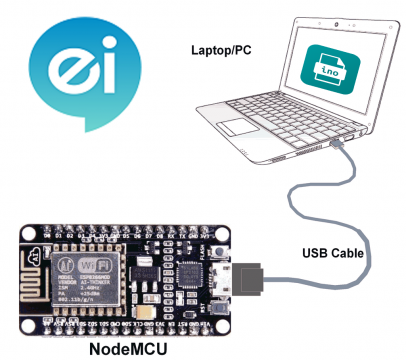
Make sure that you have all the required things. If Yes, Let’s move to the forward.
Arduino IDE Setup for:
- First Download and Install Arduino IDE.
- Goto >> Files >> Preferences and paste folllowing Link in “Additional board manager URL’s”
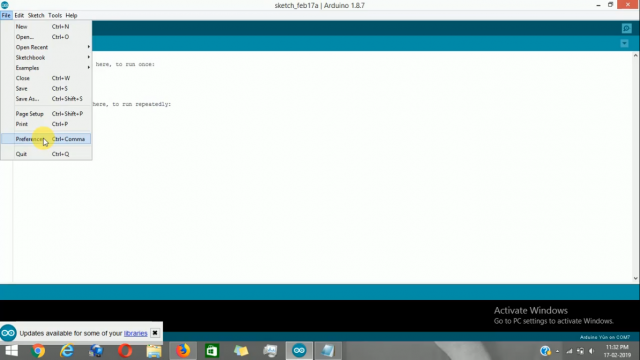
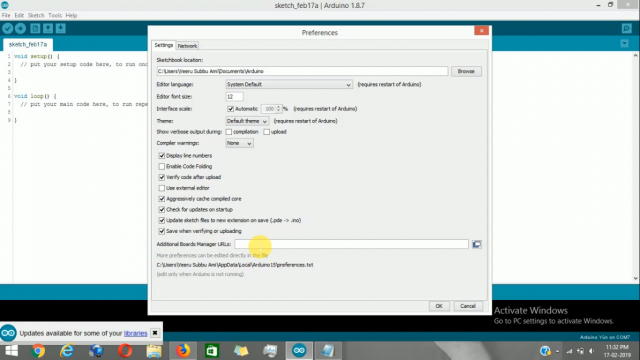

Arduino Additional Boards manager URLs – Link for NodeMCU:
"http://arduino.esp8266.com/stable/package_esp8266com_index.json" (Without the quotes)
Adding NodeMCU ESP8266 board drivers to the Arduino IDE:
- Clink ok, Now Goto >> Tools >> Board >> Board Manager.
- Scroll down to find ESP8266 and clink on install.
This will add all the ESP boards to the IDE.
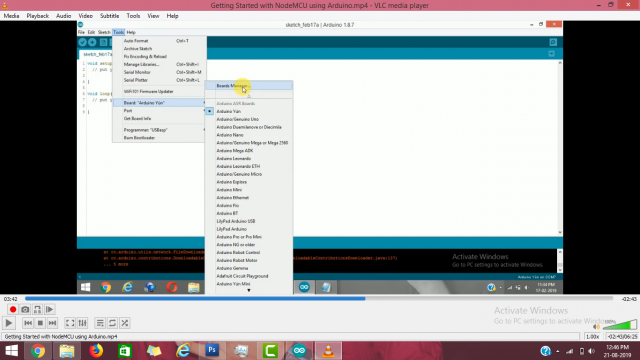
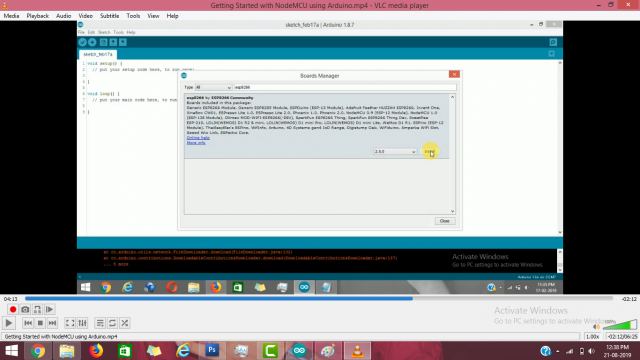
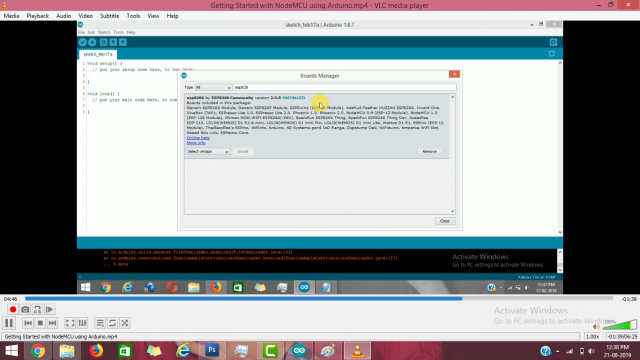
Now to recognize the Board in the computer you have to install CP210X Drivers. It is very simple. Just go to the link and download the version compatible with your device.
Now you have to select the correct board, Here I have used NodeMCU 1.0 (ESP_12E Module).
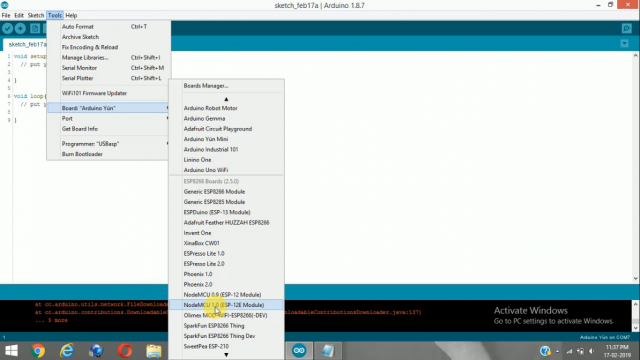
After selecting the board to follow settings below:-
- Flash Size : “4M (3M SPIFFS)”
- Debug Port: “Disabled”
- Debug Level: “None”
- IWIP Variant: “V2 Lower Memory”
- CPU Frequency: “80Mhz”
- Upload Speed: “115200”
- Erase Flash: “Sketch On”
- Port: “COM port available” (where the device is connected should show up)
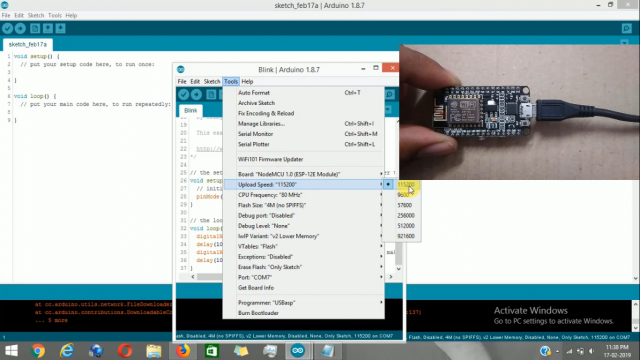
Now you can upload your sketch on the board.
Uploading Sketch to NodeMCU:
Now that the IDE is set up for NodeMCU you can test it by uploading an Example sketch as follows:-
- In IDE Goto >> Files >> Examples >>01.Basics
- Select the Blink Example and upload it.
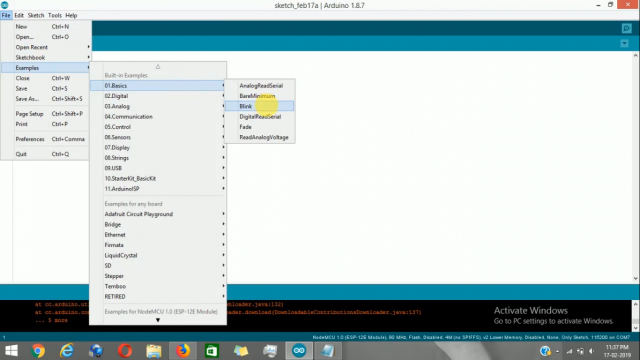
The onboard LED should start to blink. That means you successfully programmed the board. The onboard LED is connected to pin D0 of ESP8266.
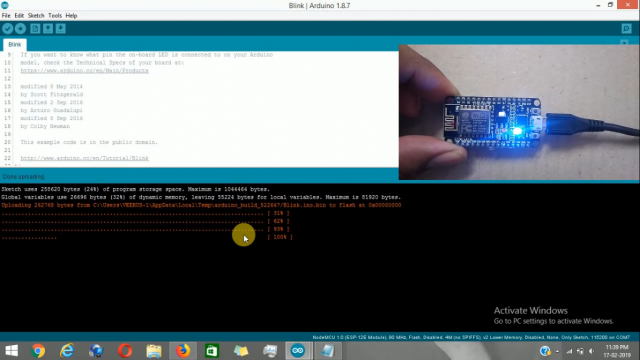
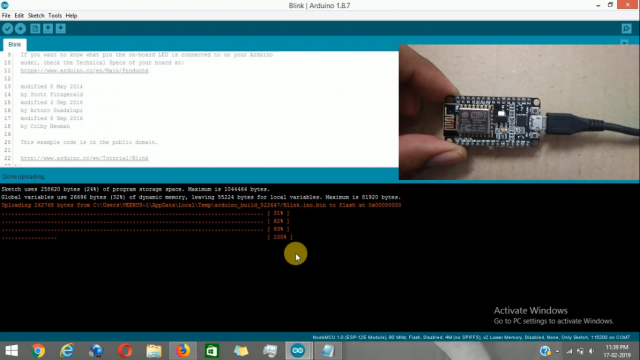
Here I have listed the NodeMCU’s pin and corresponding Arduino pins for your kind information :
- D0 = 16
- D1 = 5
- D2 = 4
- D3 = 0
- D4 = 2
- D5 = 14
- D6 = 12
- D7 = 13
- D8 = 15
- D9 = 3
- D10 = 1
Good luck for fun with this amazing system on board…..
Helpful links-
https://github.com/esp8266/esp8266-wiki/wiki
http://nodemcu.com/index_en.html
https://nodemcu.readthedocs.org/en/dev/
Please subscribe to our channel for more updates and new projects…
Cheers…

[…] Before going to ESP8266 sketch data upload tool make sure, your machine has the latest Arduino IDE installed locally, with the ESP8266 plugin installed. If you don’t know how to install ESP8266 plugin, check out this article: NodeMCU programming with Arduino. […]
[…] For getting started with NodeMCU and Arduino IDE check: NodeMCU programming with ArduinoIDE in 5min. […]